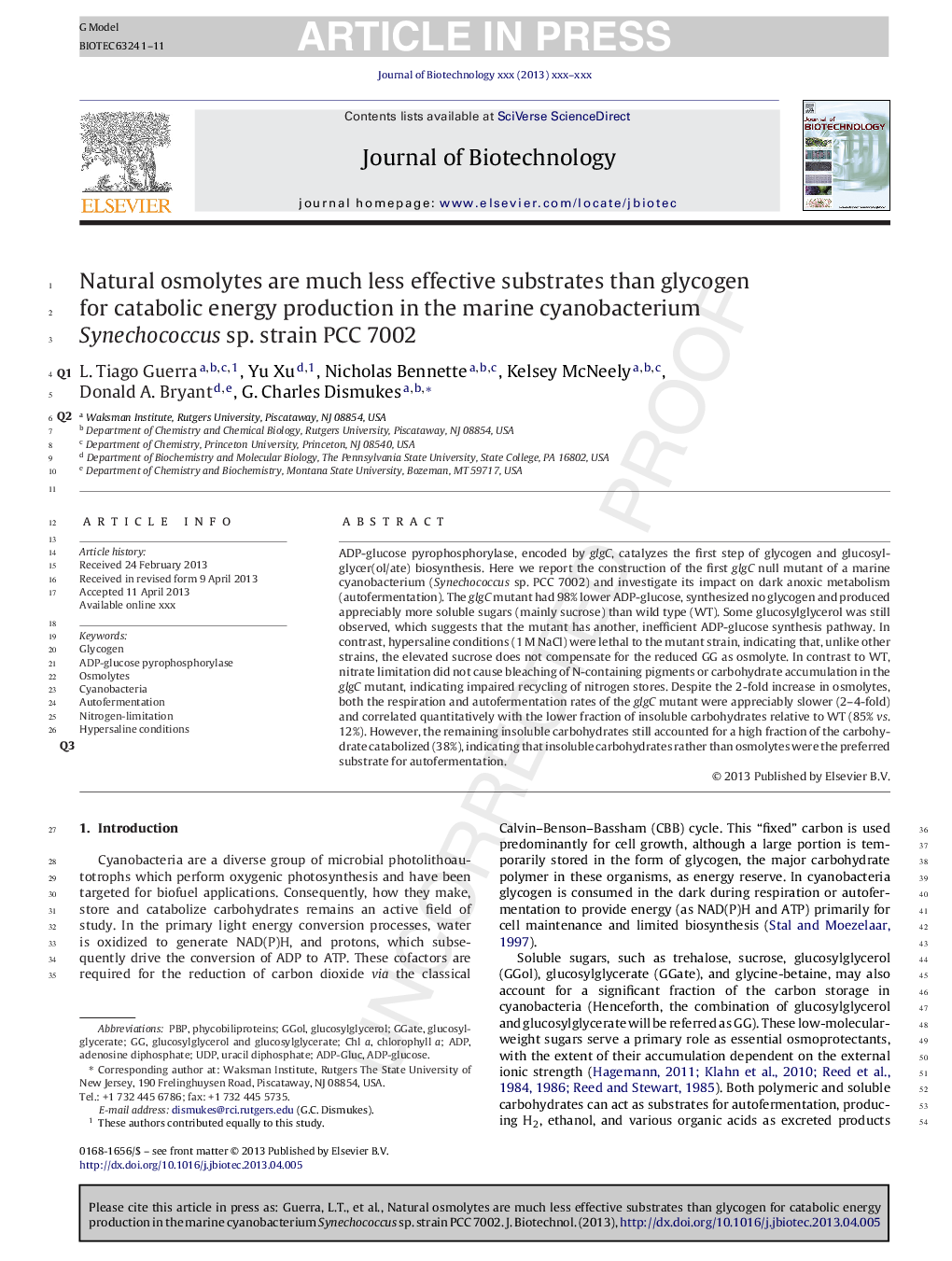| کد مقاله | کد نشریه | سال انتشار | مقاله انگلیسی | نسخه تمام متن |
|---|---|---|---|---|
| 6491796 | 43432 | 2013 | 11 صفحه PDF | دانلود رایگان |
عنوان انگلیسی مقاله ISI
Natural osmolytes are much less effective substrates than glycogen for catabolic energy production in the marine cyanobacterium Synechococcus sp. strain PCC 7002
دانلود مقاله + سفارش ترجمه
دانلود مقاله ISI انگلیسی
رایگان برای ایرانیان
کلمات کلیدی
ADP-glucose pyrophosphorylasePhycobiliproteinsChl aADPUDPPBPAutofermentationadenosine diphosphate - آدنوزین دی فسفاتOsmolytes - اسمولیت هاCyanobacteria - سیانوباکتریهاStress conditions - شرایط استرسChlorophyll a - کلروفیل aADP-glucose - گلوکز ADPGlucosylglycerol - گلوکوزیل گلیسرولGlycogen - گلیکوژن
موضوعات مرتبط
مهندسی و علوم پایه
مهندسی شیمی
بیو مهندسی (مهندسی زیستی)
پیش نمایش صفحه اول مقاله

چکیده انگلیسی
ADP-glucose pyrophosphorylase, encoded by glgC, catalyzes the first step of glycogen and glucosylglycer(ol/ate) biosynthesis. Here we report the construction of the first glgC null mutant of a marine cyanobacterium (Synechococcus sp. PCC 7002) and investigate its impact on dark anoxic metabolism (autofermentation). The glgC mutant had 98% lower ADP-glucose, synthesized no glycogen and produced appreciably more soluble sugars (mainly sucrose) than wild type (WT). Some glucosylglycerol was still observed, which suggests that the mutant has another, inefficient ADP-glucose synthesis pathway. In contrast, hypersaline conditions (1Â M NaCl) were lethal to the mutant strain, indicating that, unlike other strains, the elevated sucrose does not compensate for the reduced GG as osmolyte. In contrast to WT, nitrate limitation did not cause bleaching of N-containing pigments or carbohydrate accumulation in the glgC mutant, indicating impaired recycling of nitrogen stores. Despite the 2-fold increase in osmolytes, both the respiration and autofermentation rates of the glgC mutant were appreciably slower (2-4-fold) and correlated quantitatively with the lower fraction of insoluble carbohydrates relative to WT (85% vs. 12%). However, the remaining insoluble carbohydrates still accounted for a high fraction of the carbohydrate catabolized (38%), indicating that insoluble carbohydrates rather than osmolytes were the preferred substrate for autofermentation.
ناشر
Database: Elsevier - ScienceDirect (ساینس دایرکت)
Journal: Journal of Biotechnology - Volume 166, Issue 3, 10 July 2013, Pages 65-75
Journal: Journal of Biotechnology - Volume 166, Issue 3, 10 July 2013, Pages 65-75
نویسندگان
L. Tiago Guerra, Yu Xu, Nicholas Bennette, Kelsey McNeely, Donald A. Bryant, G. Charles Dismukes,